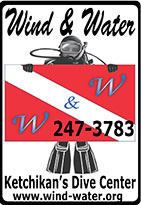|
Fish Factor Boosting quality at Bristol Bay benefits all Alaska salmon fishermen; 44% of Bay boats don’t chillBy LAINE WELCH
December 11, 2016
It can be summed up in a single word: sockeye. “The sockeye resource at Bristol bay is unique because of its size,” said Andy Wink, Senior Seafood Analyst at the Juneau-based McDowell Group. “Typically, it’s 35 to 40 percent of the global sockeye supply, and it is a huge chunk of Alaska’s overall salmon value. Preliminary data for 2016 show about 38 percent of Alaska’s total salmon value came out of Bristol Bay, and even more if you add in the Alaska Peninsula.” The size of the Bay harvest also means it has a big impact on salmon prices elsewhere. “In 2015, when the base price was 50 cents at Bristol Bay and they had a large harvest, coho prices come way down and sockeye in other areas came down quite a bit too,” Wink explained. “It’s a market moving fishery is the best way to describe it, and that is why it affects so many other Alaska fishermen even if they don’t fish in the Bay.” But that is where a problem arises. About 44 percent of Bristol Bay’s roughly 1,600 active driftnet permit holders don’t chill their fish. “That has big ramifications for the overall value of the resource. How much of that value is being left on the table by not chilling?” he asked. Major processors have put the fleet on notice that they won’t buy from “dry boats” starting in 2018. That’s due to a big shift over several years in the products being sent to markets. The bulk of the Bay sockeye this year was flown out fresh, either in headed and gutted form (H&G) or as fillets, and not put into lower value cans. Two decades ago, up to 75 percent of the Bristol Bay sockeye catch was canned; today, it’s closer to 25 percent. “The growth in the Bristol Bay fishery is coming out of fillets and H&G, particularly in the domestic market. But to capitalize on that, the fishery and the processors really need to deliver a quality product,” Wink said. “It bears repeating – the fishermen who close that chilling gap will be the ones who are going to be taken care of more by the processors, because that’s who is feeding their growth.” Improving fish quality is the mission of the Bristol Bay Regional Seafood Development Association, a non-profit operated for 12 years by drift fishermen and funded by a one percent tax on their catches. “Lots of people would love to refrigerate but feel their vessel isn’t worth the investment, and the cost for a new vessel is pushing $400,000,” said Mike Friccero of Kodiak, BBRSDA president and 35-year Bay veteran. “The fleet is aging and some guys don’t see the long term pay back for that big investment. So a lot of people are still sitting on the fence.” The beginning cost for a refrigerated sea water (RSW) system is $30,000 and installation also requires hydraulic overhauls, fish hold modifications and other renovations. ”It’s like saying what’s the cost of remodeling your kitchen. My answer is it depends on who you’re married to,” Friccero said with a laugh. He added that 35 Bay boats have been shipped to Seattle for renovations this year, likely for adding refrigeration and related improvements. “It’s very hard to get that work done in Bristol Bay and people are building warehouses for anticipated boat improvements to do indoors in the winter,” Friccero said. In the long run, he believes it’s all worth it. “The premium for chilling and good handling is as much as 25 cents a pound,” Friccero said. “I think the tide is changing and we are trying to find ways to get traction to make a difference with better fish quality. It’s part of our mission statement and it’s the most important thing we have.” The preliminary ex-vessel (dockside) value of Bristol Bay sockeye increased 66 percent in 2016 to more than $153 million due to a price increase and strong harvest. Find the latest sockeye salmon market report at the BBRSDA home page. Pot protection Gulf of Alaska longliners targeting sablefish (black cod) will get protection from hook-robbing whales by being able to fish with pots starting next year. Pots strung together on longlines have been used in the Bering Sea to protect sablefish catches from killer whales since 2008. An analysis by North Pacific Fishery Management Council staff in 2013 showed that when killer whales were present when gear was retrieved during the annual stock survey, the whales removed 54 to 72 percent of the sablefish from hooks. At prices ranging from $4 to more than $9 a pound, depending on fish size, “getting whaled” adds up to a bad pay day for fishermen. “A study in the Western Gulf and Bering Sea on six vessels a few years ago estimated an additional $980 per vessel day for additional fuel, food and costs for lost time because of sablefish loss. Estimated fuel costs associated with those sets were 82 percent higher,” said Rachel Baker, a fisheries management specialist at NOAA Fisheries in Juneau. Total estimated sablefish catch removals by killer whales during 1995-2016 ranged from 1,235 tons to 2,450 tons in western Alaska areas, according to Council documents. Killer whale depredation was more severe (catch rates declined by 45 percent-70 percent) than sperm whale depredation (the decline was 24 percent-29 percent). It’s sperm whales that are the sablefish pirates in the Gulf, where an estimated 651 tons to 1,204 tons of sablefish have taken between from 2001-2016. The new gear can be used throughout the Gulf, with some added protections to prevent conflicts between pots and longlines in the Eastern portion. “In the Southeast area, anyone using longline pot gear for sablefish will have to remove all of their gear from the fishing grounds when they go in to make a landing,” Baker said. The sablefish and halibut fisheries occur at the same time and many longliners hold quota shares of each. In that case, Baker said fishermen catching legal sized halibut in pots can retain it. “As long as they have sufficient shares of the catch, they are required to keep that halibut,” Baker explained. “The Council thought it was an important concept from a management perspective to reduce discards and promote efficiency in fishing.” Many fishermen who want to switch to pot gear will likely be stymied by the cost. Buying pots and making the necessary vessel conversions could cost as much as $100,000. “So we're likely to have limited numbers of fishermen switching to pot gear right away and possibly even down the road,” Baker said. “In fact, most sablefish fishermen in the Gulf are likely to continue to use hook-and-line gear due to the costs and the infeasibility of using pot gear on smaller vessels.” The new rules go into effect next March and will be reviewed fully after three years. Seafood Symphony! The call is out for products for the 24th annual Alaska Symphony of Seafood competition which showcases new items made from Alaska seafood. Products can be entered into one of four categories: retail/smoked, foodservice, Beyond the Plate (byproducts) and Beyond the Egg. Entries are individually evaluated by a panel of judges and top winners receive a free trip to Seafood Expo North America in Boston. Symphony bashes where the public can sample the new products and select a People’s Choice Award are set for Jan. 25 in Seattle and Feb. 22 in Juneau. The popular Anchorage event has been canceled due to budget cuts, said Julie Decker, executive director of the Alaska Fisheries Development Foundation, host of the event. Deadline to submit products is Jan. 6, 2017. www.afdf.org/symphony-of-seafood/ .
Laine Welch ©2016 Laine can be reached
at msfish[AT]alaska.com
Representations of fact and opinions in comments posted below are solely those of the individual posters and do not represent the opinions of Sitnews.
SitNews ©2016 Stories In The News Ketchikan, Alaska
|
|||




